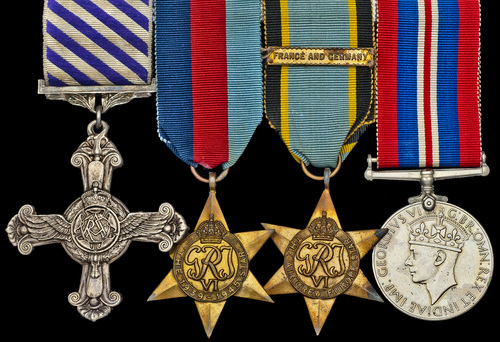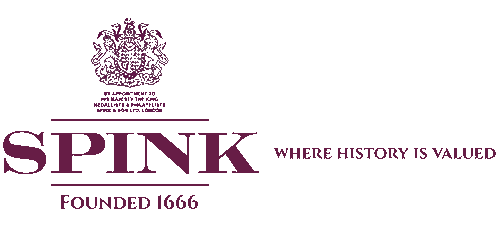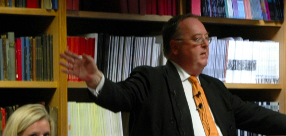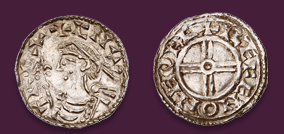
Auction: 15002 - Orders, Decorations, Campaign Medals and Militaria
Lot: 19
A Fine Second War 1945 'Halifax Mid-Upper Gunner's' D.F.C. Group of Four to Gunnery Leader, Flight Lieutenant S.K. 'Max' Coleman, Royal Air Volunteer Reserve, Who Flew in At Least 30 Operational Sorties, The Vast Majority As Part of His Squadron Commander's Crew; He Served in the Legendary 617 (Dam Buster) Squadron, August 1945-January 1947
a) Distinguished Flying Cross, G.VI.R., reverse officially dated '1945', with Royal Mint case of issue
b) 1939-1945 Star
c) Air Crew Europe Star, with France and Germany Bar
d) War Medal, light verdigris, very fine, mounted for wear, with the following related items:
- Two Identity Tags
- R.A.F. Navigator's, Air Bomber's and Air Gunner's Flying Log Book (29.8.1943-18.12.1958), with additional annotations from recipient's widow
- Named enclosure for D.F.C. award
- Several photographs from various stages of recipient's career; with a file of research (lot)
D.F.C. London Gazette 22.5.1945 Flying Officer Sydney Kenneth Coleman (179388), R.A.F.V.R., 76 Sqn
The Recommendation, dated 25.1.1945, states: 'As mid-upper gunner this Officer has participated in very many sorties including such heavily defended German targets as Berlin, Frankfurt, and targets in the Ruhr. He is a most courageous and resourceful member of aircraft crew, and his skill and vigilance have on more than one occasion contributed to the safe return of his aircraft. As deputy Gunnery Leader he has shown great enthusiasm to inspire the training in his section and has set a fine example. It is considered that his fine record merits the award of the Distinguished Flying Cross.'
Remarks by Station Commander: 'This Officer has taken part in attacks upon many well defended German targets in a fine tour just completed. As a member of the Squadron Commander's crew, he has contributed to the success of each sortie, particularly during combat with enemy fighters. He is recommended for the non-immediate award of the Distinguished Flying Cross.'
Flight Lieutenant Sydney Kenneth Coleman, D.F.C., born Salisbury, Southern Rhodesia, 1918; educated Frensham Heights, Farnham and Nottingham University; served with the Royal Air Force Volunteer Reserve during the Second War; carried out initial training as an Air Gunner at No. 4 A.G.S., August 1943; after postings to No.10 O.T.U. and 1652 Conversion Unit, he was posted for operational service to 640 Squadron (Halifaxes), Leconfield, Yorkshire, March 1944; here he was crewed with Flight Lieutenant Ralph Cassels as his pilot; Coleman flew in 23 operational sorties with the Squadron, including: Frankfurt (2); Berlin; Essen; Nuremburg, 30.3.1944, '2 Fighter Attacks. Some Hits. Hit By Flack. Returned On 3. Landed Hartford Bridge. Hydraulics U/S. R.T. AL60 U/S.' (Log Book refers); for the latter '795 aircraft were dispatched - 572 Lancasters, 214 Halifaxes and 9 Mosquitoes. The German controller ignored all the diversions and assembled his fighters at 2 radio beacons which happened to be astride the route to Nuremburg. The first fighters appeared just before the bombers reached the Belgian border and a fierce battle in the moonlight lasted for the next hour. 82 bombers were lost on the outward route and near the target... 95 bombers were lost in all... It was the biggest Bomber Command loss of the war' (The Bomber Command War Diaries, M. Middlebrook and C. Everitt refers). Martin Middlebrook, in The Nuremburg Raid, also offers the following on Coleman's crew, when having survived the raid they tried to return to base, 'Those men who landed in the south with badly damaged aircraft returned to their home airfields by train. A 640 Squadron crew were surprised that, when they crossed London by Underground, complete with flying suits and parachutes:
"Nobody took the slightest bit of notice of us despite our impedimenta and generally scruffy appearance and, when we reached Beverley, the station master refused to let us use his telephone to ring Leconfield for transport. We couldn't raise tuppence between the seven of us and it was some time before we found a 'phone. All of which went to show that the world did not think us heroes even if we did ourselves."
Coleman continued his tour with trips to Terngier Marshalling Yard; Ottignies Marshalling Yard; Dusseldorf, 22.4.1944, 'Coned Twice. Hit By Accurate Heavy Flak. Sighted Ju. 88 and F.W. 190 Over Target' (Log Book refers); Villeneuve St. George; Malines; Morsalines; Bourg-Leopold; Amiens; Evrecy HQ 12th Panzer Division; Sterkrade; St. Martin L'Hortier; Mimoycques (2), including 6.7.1944, 'Hit By Flak. Kite Written Off' (Ibid); Villers Bocage (Daylight); Vielles-et-Neives; Caen; and Foret De Nieppe; his pilot Ralph Cassels had been promoted Wing Commander and given command of 76 Squadron, August 1944; Coleman went with Cassels to 76 Squadron (Halifaxes), Holme-on-Spalding Moor, Yorkshire; he flew in 7 operational sorties with the Squadron (becoming Gunnery Leader in December 1944), including: Brest; Homburg; Le Havre; Gelsenkirchen-Schloven; Wilhelmshaven; Coblenz and Ludwigshaven; served as an Instructor at 1652 Conversion Unit and 1660 Conversion Unit, February 1945-July 1945; posted to the famous 617 (Dam Buster) Squadron (Lancasters), Waddington, Lincolnshire, August 1945; crewed with 'Big Sax' Saxleby as his pilot, Coleman remained with him when he was given command of the Squadron and flew them out to India for a series of Formation Flypasts as part of the Victory Celebrations, March 1946; he carried on serving with the Squadron at Binbrook until January 1947; employed by the School of Air Traffic Control, R.A.F. Watchfield; subsequent postings included to No.1 F.T.S., Moreton-in-Marsh and C.N.C.S. Shawbury, before being posted to R.A.F. Eastliegh, Kenya, 1958; retired March 1962.
See also Lot 22.
Subject to 20% VAT on Buyer’s Premium. For more information please view Terms and Conditions for Buyers.
Sold for
£1,800




